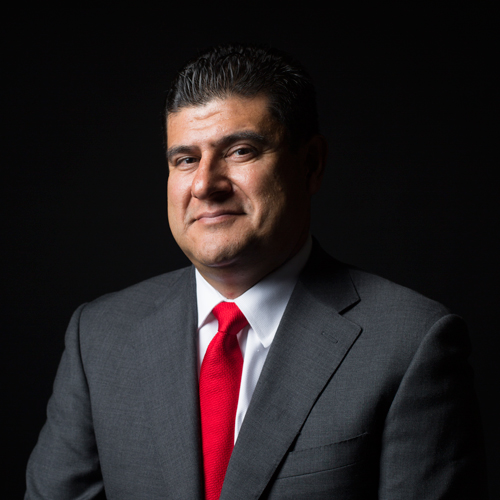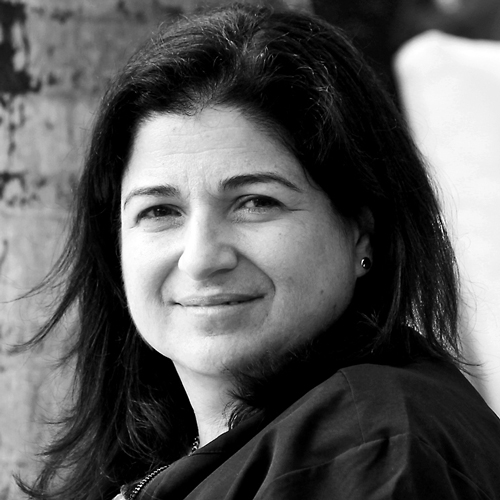In 1996, when private connections to the Internet were still in their infancy, the Arizona legislature authorized the University of Arizona to establish the Arizona Telemedicine Program which would provide online health-care services to Native American tribes, people living in remote communities, and rural prisons. Dr. Ana Maria Lopez, who joined the University of Utah Health Sciences team earlier this year, was that program’s founding medical director. Lopez talks to HE about her lifelong commitment to increasing access to quality health care, the original telemedicine program’s success and growth, and objectives in her new role in Utah.
HE: It must have been exciting to be part of the beginning of such an innovative program—tell us some more about it.
It was a great opportunity to work in a new area that was poised to make an impact. Arizona was an early adopter of telehealth practices and a trendsetter. But different states have since implemented telehealth practices in different ways. Though most states now allow virtual doctors to prescribe medications, 16 states still require in-person consultations before drugs can be prescribed.
How has the Arizona Telemedicine Program (ATP) progressed since its launch nineteen years ago?
ATP’s broadband network is now connected to 160 sites in more than 70 Arizona communities and has handled more than one million cases since its launch. Patients in remote locations have access to highly trained specialists who can diagnose cardiac problems, skin conditions, or strokes as rapidly and accurately as if they were in the same room. Some especially noteworthy successes include early detection of diabetic retinopathy among Native Americans and at-home monitoring of patients with congestive heart failure.
Sounds like ATP has been doing some amazing things. Why did you leave to take a job in Utah?
In February 2015, I became associate vice president for health equity and inclusion at the University of Utah Health Sciences (UUHS), and was proud to join the faculty. UUHS clearly understands that the best way to address health disparities between groups of people is to engage people from as many different backgrounds as possible, educate patients about appropriate health care choices, and ensure they have access to medical services. That has always been a focus of mine, so it’s great to join a team that is working toward that goal.
What are some of the specific ways you’re accomplishing that goal with UUHS?
We just applied for a $100,000 grant to serve Medicaid patients from rural areas who, based on their diagnoses, may have a high risk for readmission to Huntsman Cancer Hospital (part of the University of Utah’s health-care system). Under the program, patients will be sent home with a computer tablet that will enable bi-directional electronic communication with the clinical team—i.e. they will go home with the health-care team in their pocket. One of the areas we will be actively addressing are symptoms following chemotherapy.
We anticipate that this approach will enable us to identify potential problems earlier, enact timely evidence-based interventions, and, thus, reduce readmission rates and improve quality of life.
What a great use of technology.
It really is. It’s not just about technology, though. As a physician, I am also a proponent of patient-centered care and communication. For example, I’m working across UUHS on a new program that will invite a panel of patients, family members, and caregivers to visit the health-care center once a month and share experiences that can help us improve care. The patient population focus will change each month. The participants will share what worked, what didn’t work, how they felt about the services provided, and the clinical approach.
Our job as health-care professionals is to take care of patients. Who better to tell us how to do that than the patients themselves? These sessions will be videotaped so members of the clinical team who aren’t able to attend them live will be able to watch them later.
What about insurance? How does coverage work with telemedicine?
Medicare covers some live, interactive telemedicine services for patients in rural communities but will not reimburse for “store-and-forward” consultations, which involve the storing and forwarding of digital images and/or electronic records. In many instances, reimbursements for virtual consultations are equivalent to what is paid for face-to-face visits, but the rules can vary depending on the state and particular insurance company. Arizona recently passed the Telemedicine Reimbursement Parity Act, which mandates that insurers pay for certain telemedicine services if those services are covered in the in-person clinical setting.
Any hope of a more consistent nationwide standard being developed as telemedicine becomes more routine?
There may be lessons to be learned from the Veterans Health Administration (VA). As a national network, it provides real-time, interactive clinical consultations via videoconferencing that may include the use of attachments to perform virtual physical exams, store-forward evaluations (such as reviews of radiographic images), or virtual home health services.
The VA’s network includes 152 hospitals, 1,100 caregiving facilities, and doctors whose practices are not restricted by state lines. In 2013, more than 600,000 veterans accessed VA services via telemedicine programs, totaling more than 1.7 million episodes of care. Data from this work may provide a model for telehealth
integration.
You’ve also focused on women’s health throughout your career. What women’s initiatives are you currently working on?
Just 69 percent of Utah women over forty have had a mammogram, compared to 74 percent nationwide. Other female cancer screening rates are low here, too. The Utah Cancer Action Network held a conference earlier this year, which brought a lot of us together to brainstorm ways to improve these rates. I’m also working with Deanna Kepka, an investigator at Huntsman and Assistant Professor in the University’s College of Nursing, to support her efforts regarding the role of the HPV vaccine in preventing cervical cancer.
Hispanic women are twice as likely to get cervical cancer and 1.5 times more likely to die from the disease than non-Hispanic women. Lack of screening is an important factor behind this disparity. In fact, six in ten cervical cancers occur in women who have never received a Pap test or have not been tested in the past five years. Increasing the number of Latinas getting regular Pap smears and being vaccinated for HPV may result in a decrease in cervical cancer.
In addition to improving care, you’re also working to increase diversity within the medical profession. Tell us a little about that.
Just 24 percent of the doctors in Utah are women, compared to 32 percent nationwide, so we’ve got to do better. We also need to reach more minority students. One way we’re doing that is through UUHS’s LEAP program, which assists diverse freshmen who have an interest in the health professions including pharmacy, nursing, medicine, and nutrition. The program supports them throughout their college experience via personal and academic advising, specially designed courses, and mentorship opportunities with other diverse health profession students. It also arranges for them to shadow health professionals, engage in research projects, and participate in co-curricular experiences. Our group just applied for funding to establish a “bridge” program to reach students while in high school and support them through their educational transitions to better support the health professions pipeline.
A more diverse health workforce is likely to improve the health of the population by increasing access to care for underserved patients and improving clinical interactions that can directly address social and behavioral determinants of health. Improving communication and increasing behavioral changes should lead to better clinical outcomes, which is at the core of all our efforts. I look forward to working with my UUHS colleagues to improve the quality and effectiveness of health care through inclusive excellence.

